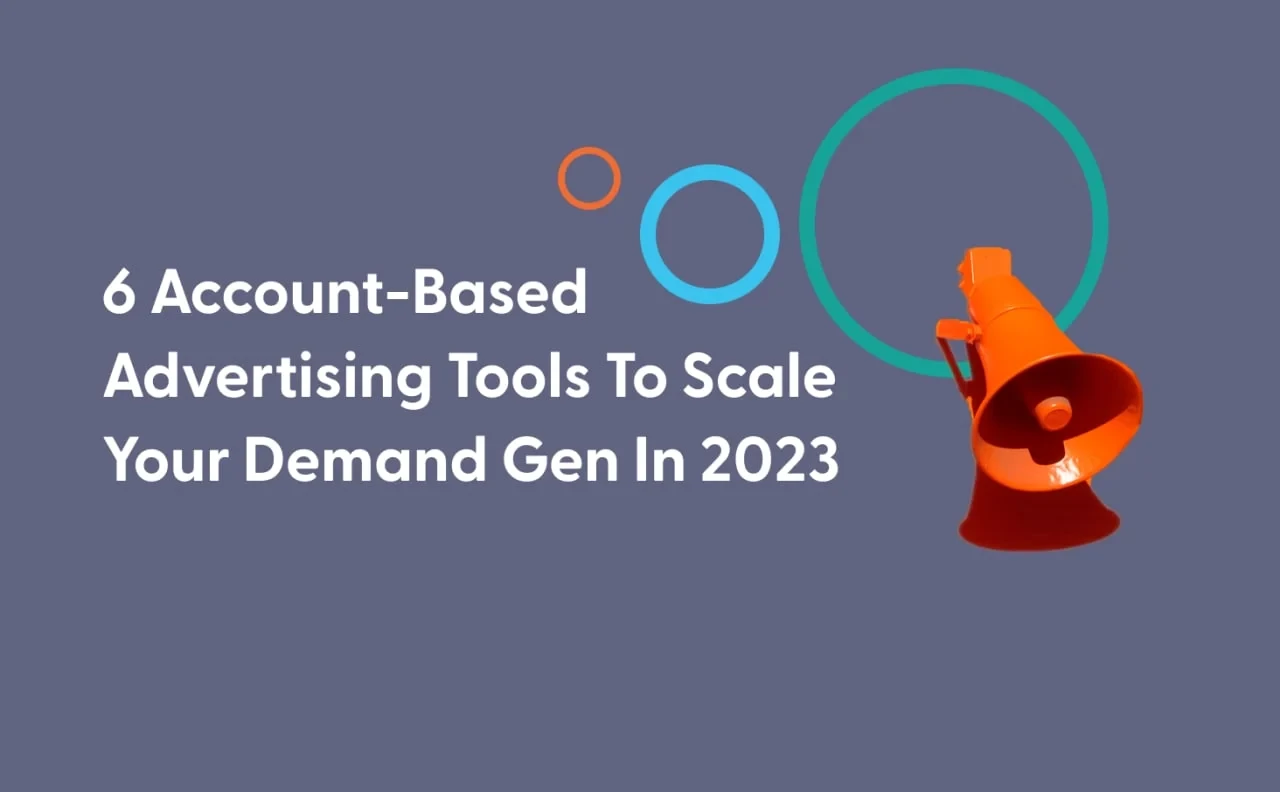
Markus Stahlberg
~9 min
6 Account-Based Advertising Tools To Scale Your Demand Gen In 2023
The new year is here, and with it comes the perfect opportunity to reassess your current demand generation strategy.
As you already know, in order to scale your business, you need to generate demand. And in order to generate demand, you need market reach, right? But how do you achieve market reach?
Through advertising, of course!
But not just any advertising. We’re talking about account-based advertising that targets specific accounts rather than individuals.
ABM advertising has quickly become one of the most effective demand generation strategies in B2B because it allows you to laser-focus your efforts on high-value accounts that are more likely to convert and that have the most revenue potential.
In other words, with ABM advertising, you’re not just casting a wide net and hoping for the best—you’re carefully targeting the fish that are most likely to bite and bring in the biggest catch.
Sounds great so far, doesn't it?
But here’s the thing: in order for account-based advertising to be effective, you need the right tools.
And that's where we come in.
To help you get started, we’ve put together a list of six ABM advertising tools that we believe will be instrumental in helping you scale your demand generation efforts in the new year and that will help you reach your target accounts more effectively.
But before we get into that, there's something we need to clarify first.
ABM vs Account-Based Advertising: The Difference
When we talk about account-based advertising, we are actually referring to two different but related things: account-based marketing (ABM) and account-based advertising.
Account-based marketing (ABM) is a holistic marketing strategy that takes a targeted, account-based approach to reaching, engaging, and converting high-value accounts. It uses a wide scope of techniques and tools, including advertising, to generate demand, propel sales and drive growth.
Account-based advertising, on the other hand, is a specific type of advertising that falls under the umbrella of ABM. It focuses on targeting specific accounts with personalized ads in an effort to generate demand and drive conversions. It is just one tool in the larger account-based marketing toolbox, but it is a powerful one.
Think of it this way: ABM is the strategy and account-based advertising is the tactic.
Let's now see what you should look for in an ABM advertising tool.
Top 6 ABM Advertising Platforms
Let’s take a look at six advertising providers and how they’re different from each other. We’ll cover the pricing, the top features, but also the least popular features of every platform. There’s no perfect tool, and you’d rather know about all the critical disadvantages before you sign a contract.
N.Rich ABM Advertising Tool
N.Rich is a go-to-market platform that combines account-based advertising with intent data. N.Rich users can launch campaigns quickly and see how the engagement and buyer intent of every target account change over time.
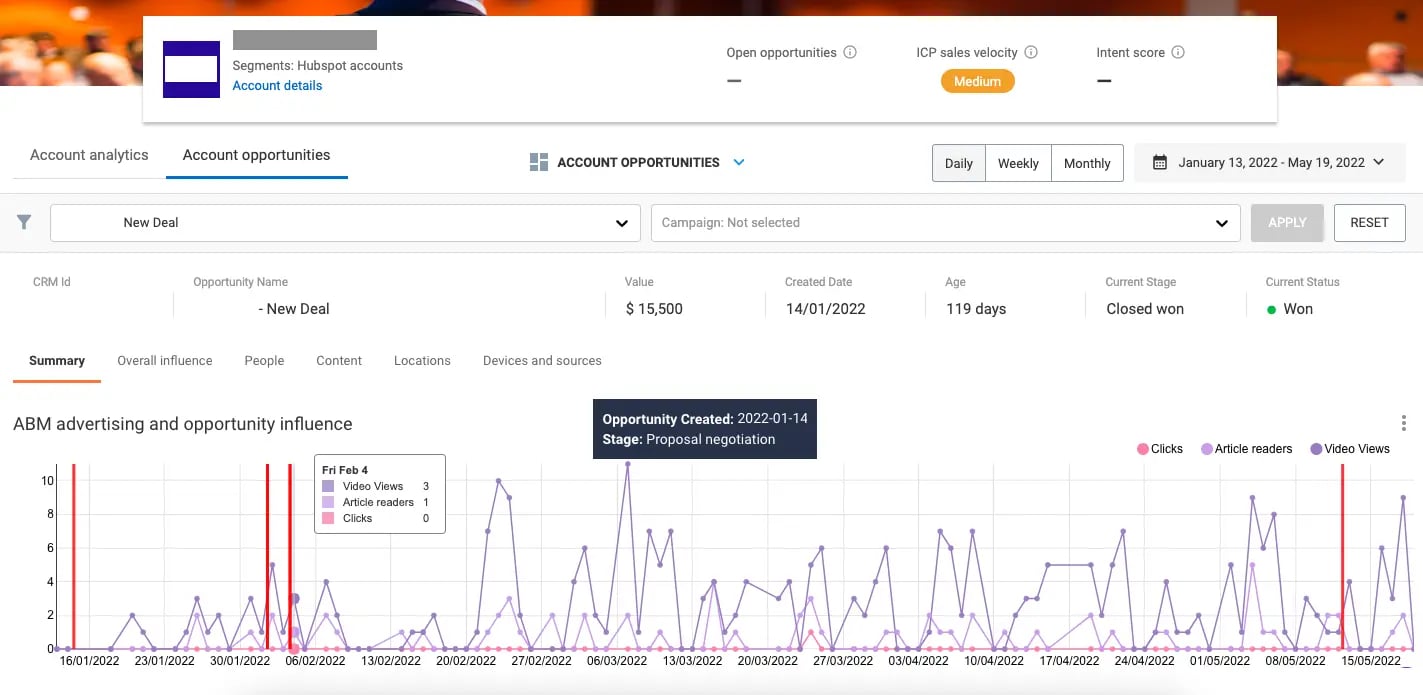
Pricing:
LITE plan: $1 280/year, optimized for $3 000 to $5 000/month ad spend
GROWTH plan: $3 550/year, optimized for $5 000 to $10 000/month ad spend
SCALE plan: $11 900/year, optimized for over $10 000/month ad spend
Main advantages:
- CPE (cost per engagement) model. The tool optimizes for real engagement signals (clicks, scrolls, video views), not impressions.
- LinkedIn Ads integration. Based on the buyer intent dynamic you see with N.Rich ads, you can export audiences to LinkedIn Ads and retarget them with relevant content and offers.
- Intuitive analytics. You can see all the advertising touchpoints during the buying cycle.
- Native content syndication. Allows you to show your full-length articles on third-party websites.
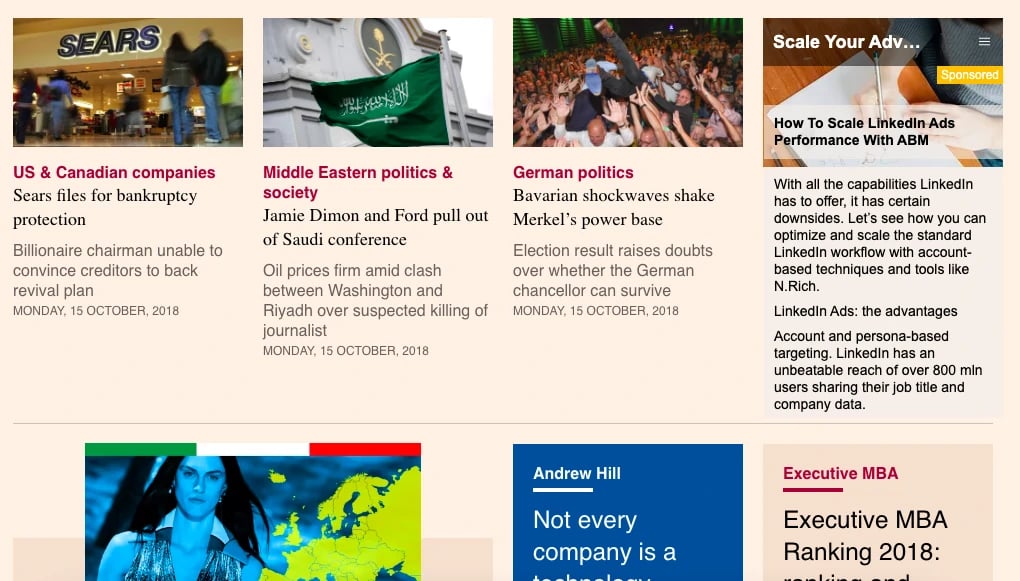
What users dislike:
- Lack of integrations: N.Rich doesn’t integrate with some popular CRM tools like Pipedrive
- No ad personalization
- Account-level data only: you can't understand who exactly saw your ad
Rollworks
Rollworks is an account-based platform that helps B2B companies align sales and marketing, identify and target key accounts, and measure progress and ROI at every stage of the buyer journey.
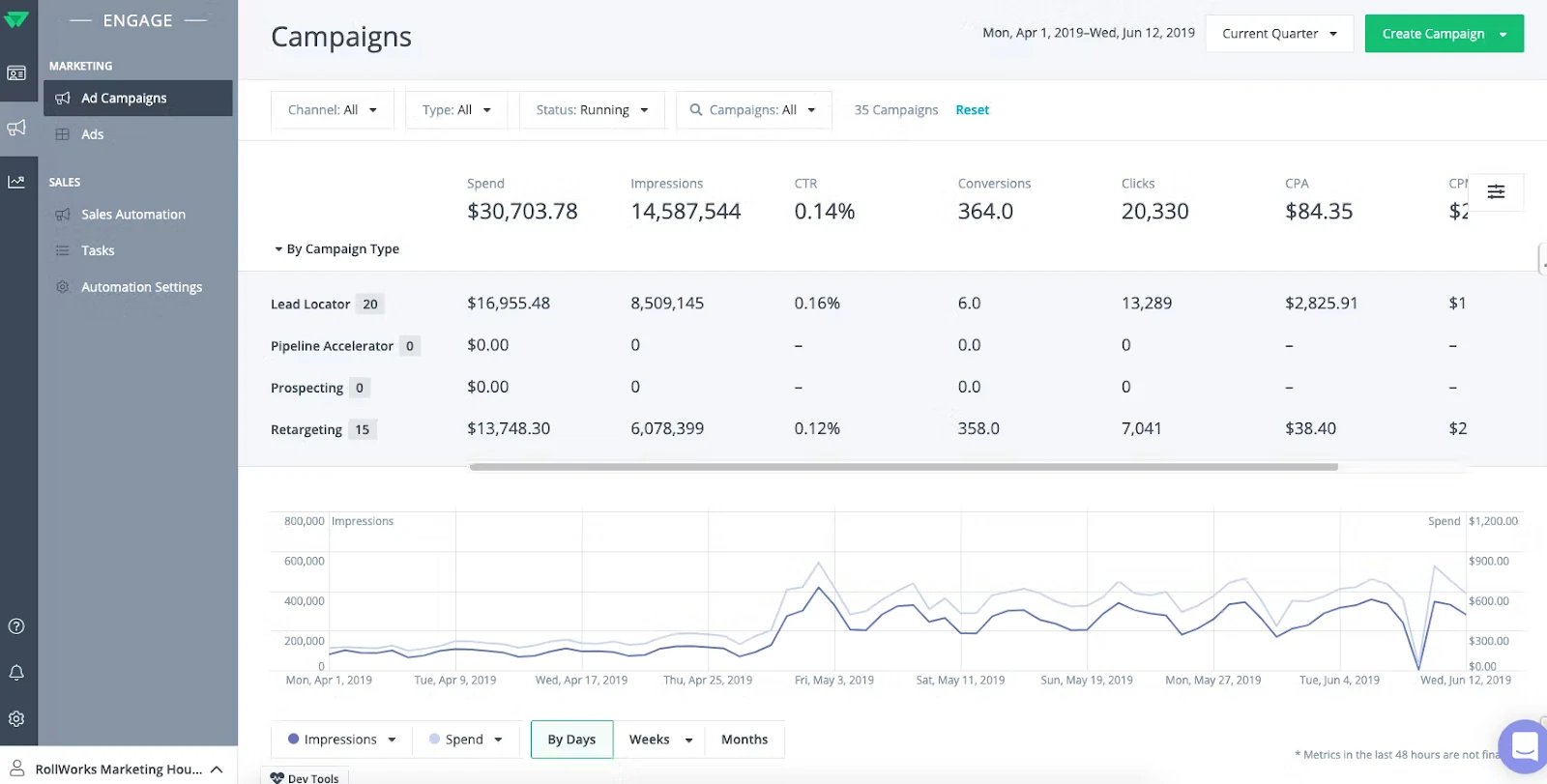
Pricing: Starts at $975/month
Main advantages:
- Can run ads throughout the web and social media
- Allow ad personalization (for Professional and Ultimate plans)
- Integrate with over 10 platforms: from G2 and GA to Marketo and Hubspot
- Provide ad creation services: static ads, HTML5 animated ads, HTML5 banner video (not for basic plans)
What users dislike:
- No transparent pricing
- No 3rd-party intent data available through SFDC integration
- Creating and uploading ads takes more than expected
Metadata
Metadata is the AI-powered account-based marketing platform that allows B2B marketers to execute and manage account-based marketing campaigns at scale, track and attribute revenue to marketing efforts, and measure pipeline and ROI.
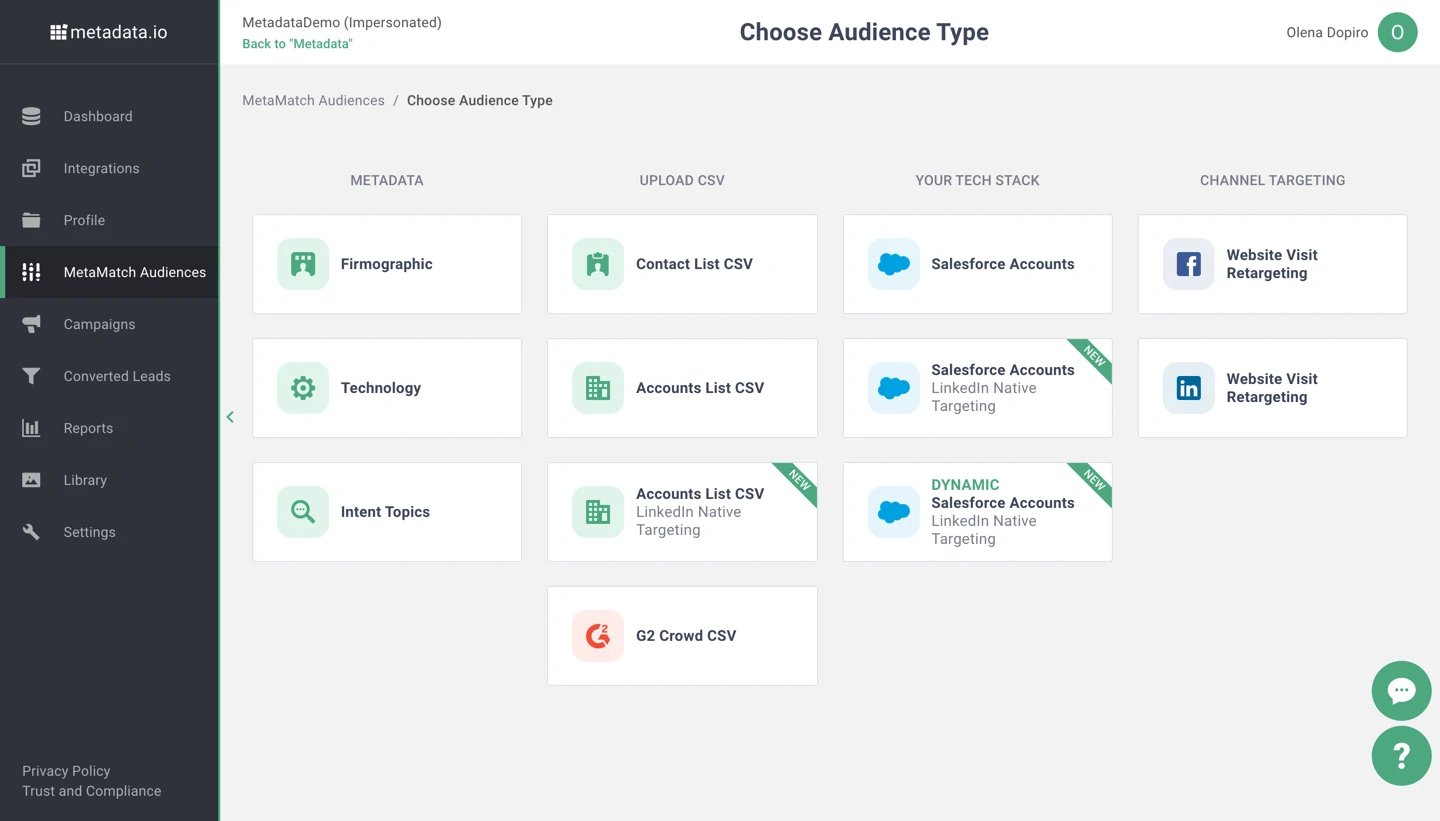
Pricing:
$24,000/year for the Website Personalization platform
$24,000/year for the Audience Targeting platform
$60,000/year for the full platform
Main advantages:
- Integrates with a lot of advertising platforms: Facebook, Instagram, LinkedIn, and even Quora Ads
- Integrates with CRM and MAS tools: HubSpot, Salesforce, Eloqua, Marketo, etc.
- Integrates with intent data providers: G2 and Bombora
- Allows creation of various ad formats inside the platform
- Ability to launch multi-channel campaigns in one single view
What users dislike:
- Not all formats are available to create within the platform (e.g. no lead gen LinkedIn Ads)
- A bit difficult to understand how the platform works
- UI is not that user-friendly according to some reviews
Terminus
Terminus is an account-based marketing platform that provides capabilities to run targeted ads and personalized emails, combined with detailed reporting and analytics. Terminus also offers a number of features designed to help you scale your ABM efforts, including multi-touch attribution, account scoring, and an intuitive campaign builder.
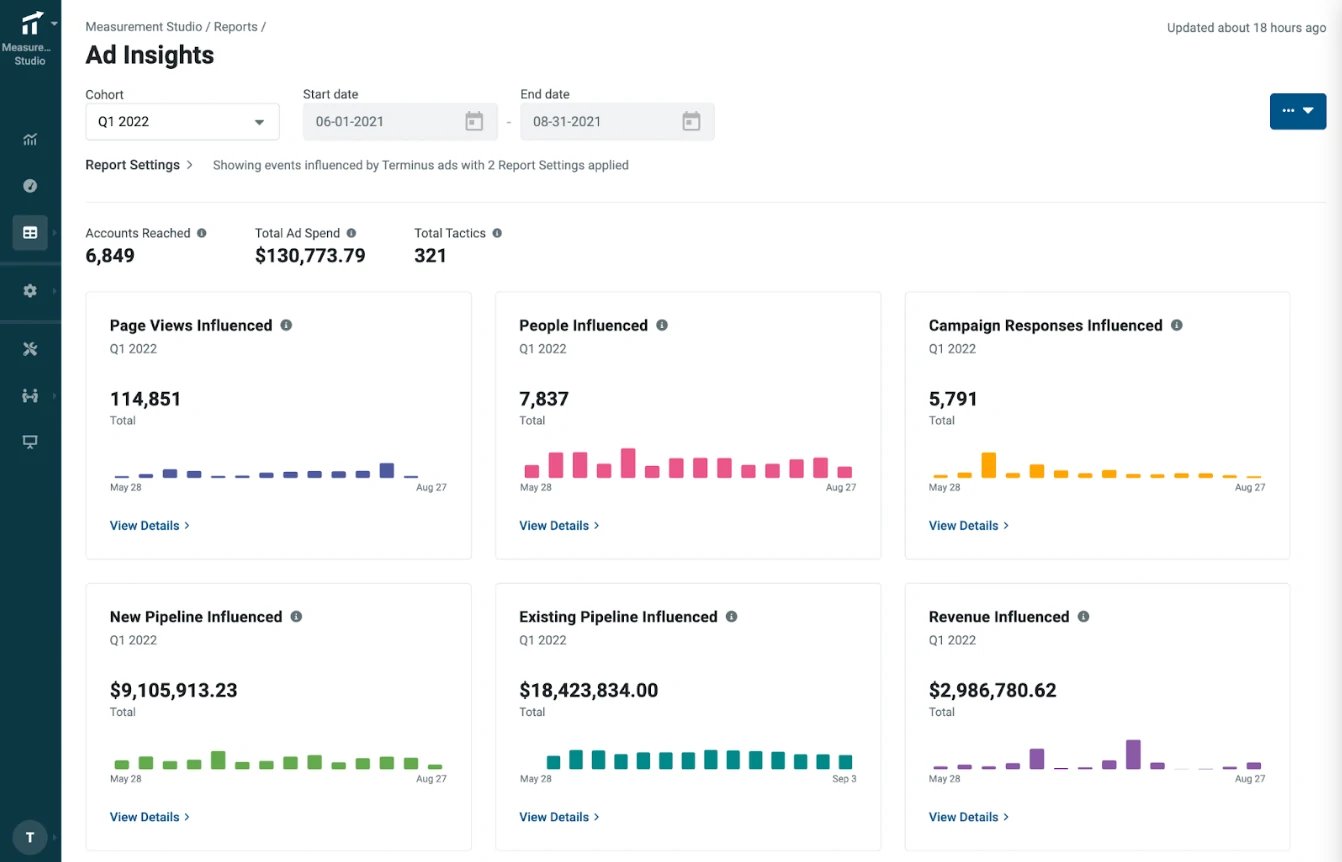
Pricing: Not publicly available, contact for a quote.
Main advantages:
- Very easy to create audiences and campaigns to AB-test and optimize results
- Closed-loop reporting and attribution of account engagement across the entire funnel
- Advanced reporting on the revenue-oriented results of campaigns.
What users dislike:
- A lot of data that isn't actionable
- Some of the reporting capabilities are limited
- Pricing isn’t transparent
Triblio
Triblio's account-based marketing (ABM) platform is the ultimate tool for orchestrating effective campaigns at every stage of your buyer’s journey. The platform combines powerful web personalization features, sales activation tools, and advertising capabilities to help you reach your target accounts and drive results.
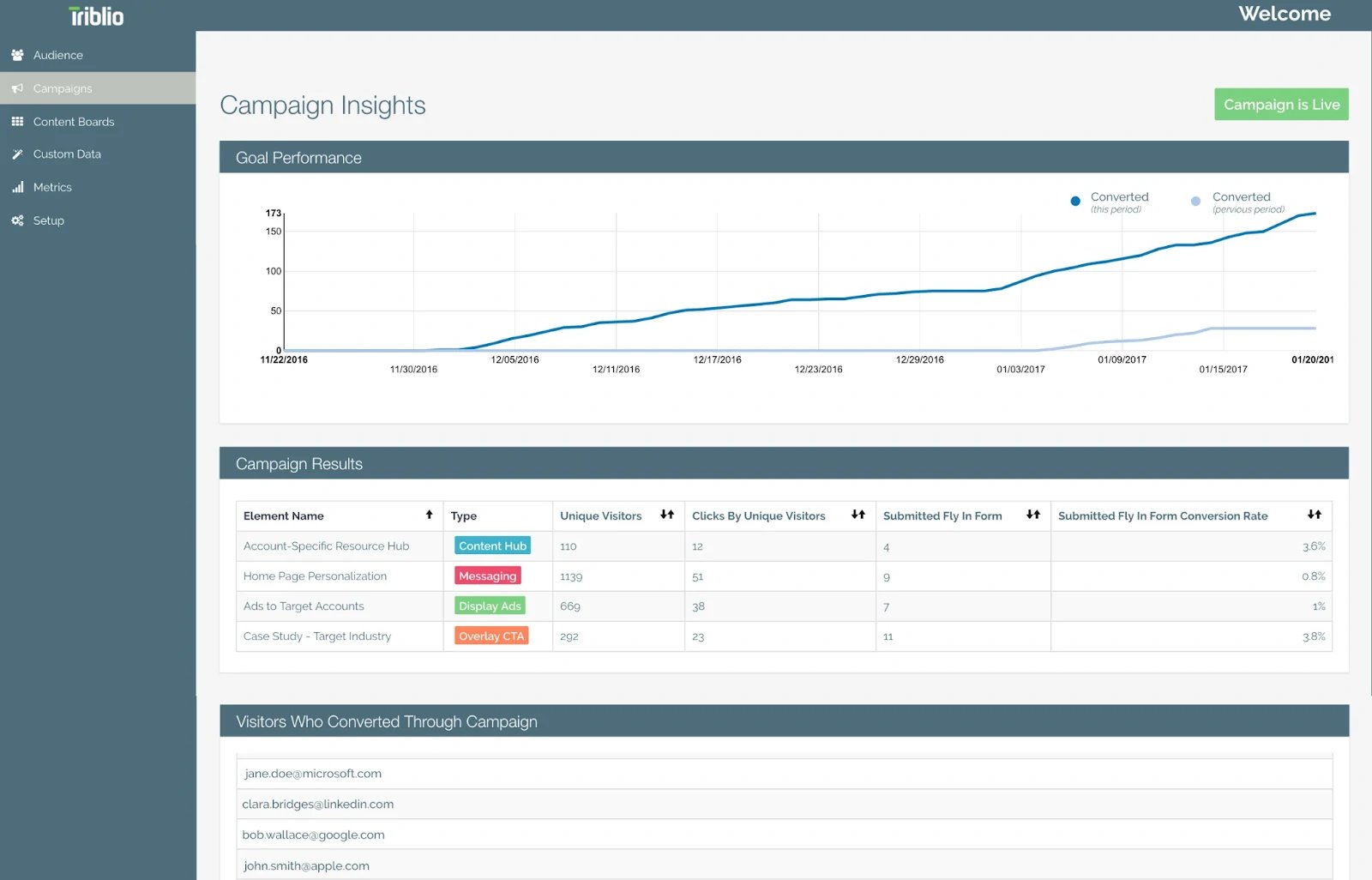
Pricing: Not publicly available, contact for a quote.
Main advantages:
- Easy to use and navigate
- Good insights into accounts
- The intent targeting is amazing
What users dislike:
- The platform can be slow
- Lack of sync between a few data sources
- Pricing isn’t transparent
LinkedIn Ads
LinkedIn Ads is not the typical account-based advertising tool, however, it's one of the best tools to target key decision-makers in companies. LinkedIn Ads allows you to create account-based ad experiences with personalized messages and content that is relevant to each specific account.
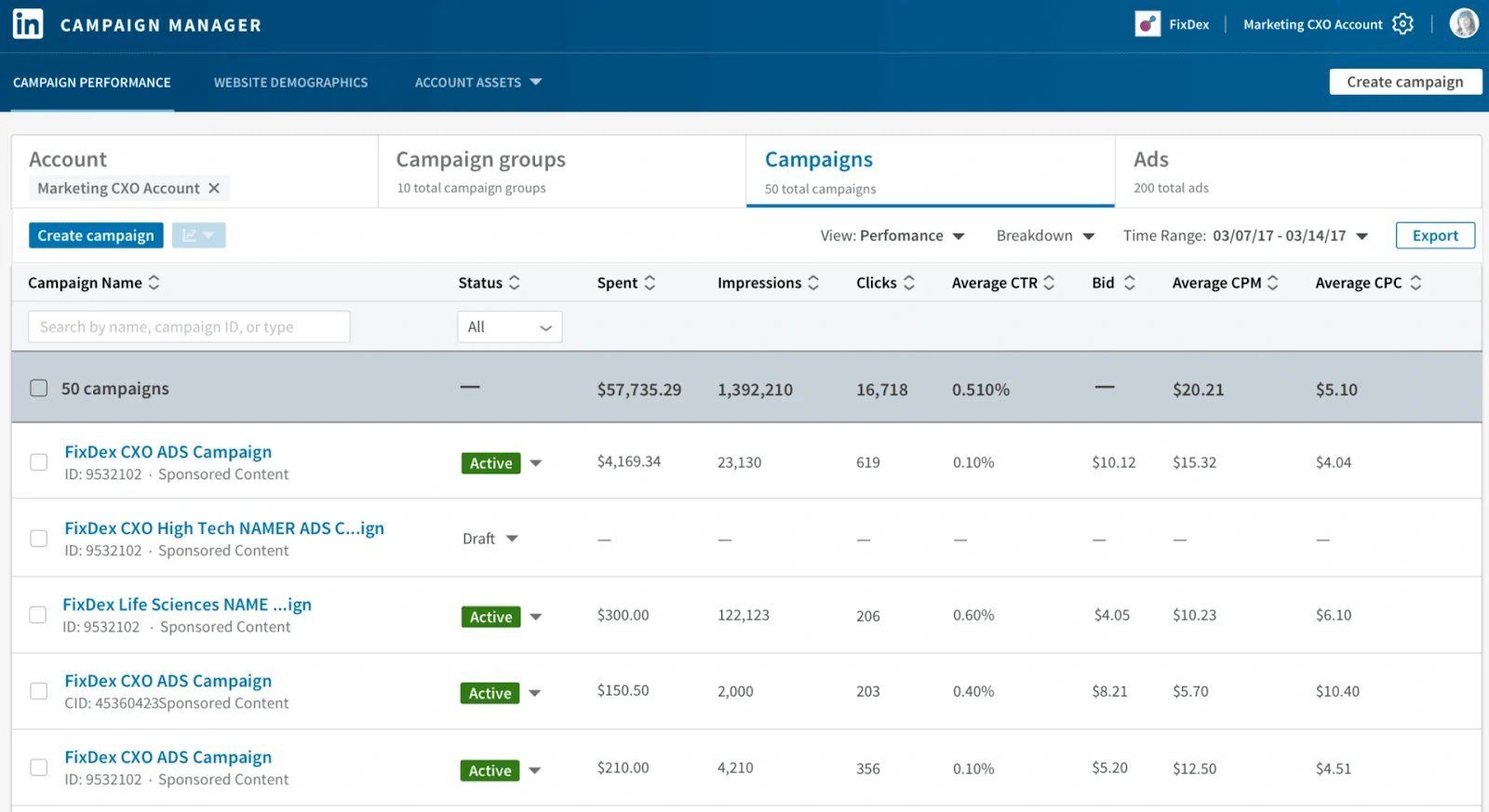
Pricing: The platform is free to use, you only pay for interactions depending on the ad format. The average CPC, according to different studies, is at $5, which makes it one of the most expensive advertising platforms, compared to Facebook or Instagram.
Main advantages:
- You can target people based on job titles and roles
- Variety of ad formats: Single image ad, carousel image ad, video ad, text ad, dynamic ad, lead gen forms, document ads, and sponsored messaging
- Good for targeting salespeople, HR, and consultants since they spend a lot of time on LinkedIn
What users dislike:
- High CPC and cost per lead
- Not suitable for B2B with long sales cycles
- No intent data
- Limited reach as key B2B buyers from non-IT/marketing/HR don’t spend much time on LinkedIn
What To Look For In An ABM Advertising Platform
Choosing the right account-based advertising tool can be a bit tricky, especially if you’re not entirely sure what to look for. Here are a few key features and capabilities you should keep an eye out for:
1. Ad formats and platforms
When looking for an ABM advertising tool, look for a tool that offers a wide range of ad formats and platforms to choose from. This way, you can tailor your campaigns to the specific needs of each account and reach your target audience where they are most likely to see and engage with your message. Not to mention, you’ll also be able to A/B test different ad formats and platforms to see which ones perform best.
2. Integrations to push engagement data to CRM and MAP
It’s important to choose an ABM advertising tool that integrates with your other marketing tools, such as your CRM and MAP. This is very important because it allows you to push engagement data back into these tools for further analysis, account prioritization, account scoring, and more.
3. Analytics capabilities
When evaluating tools, pay close attention to the analytics capabilities. The best ABM platforms will offer detailed, intuitive analytics that gives you a clear picture of your campaign performance at the contact or account level.
They should also be able to visualize the buyer journey, identify high-performing assets and audience segments, and track the dynamics of buyer intent. All of this data will be valuable in helping you optimize your campaigns for maximum impact and ROI.
4. Privacy compliance
Last but not least, make sure that the advertising platform you choose is compliant with all relevant privacy laws and regulations, such as the General Data Protection Regulation (GDPR) in the EU.
More and more companies are being held accountable for how they collect, use, and protect the personal data of their customers and employees. So it’s important to choose a tool that takes data privacy seriously and that has the security measures in place to keep your data safe.
Last year, a popular dating app for gay, bi, and trans people Grindr was fined around $7.1 million by the Norwegian Data Protection Authority for violating the GDPR. The app was found to be sharing sensitive personal data related to users' sexual orientation with third-party advertisers without users’ consent.
This just goes to show that even big companies can get it wrong when it comes to data privacy. So make sure you do your due diligence before choosing an advertising tool.